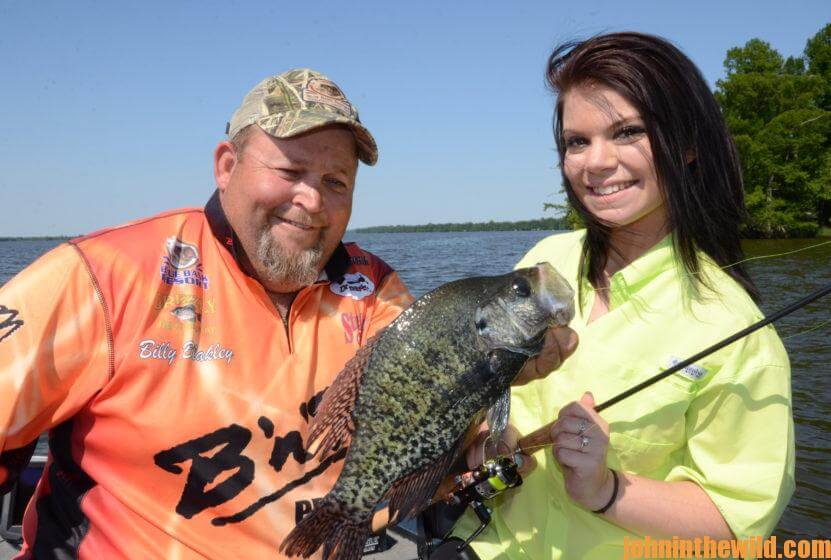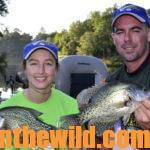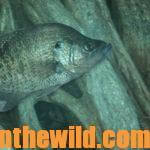Editor’s Note: Depending on where you live in the U.S., the crappie spawn may be occurring or finished now. After the spawn, most crappie fishermen usually shift their attention to other species or seek the comfort of their air-conditioned homes. If they do venture out later to take papermouths, they may fish only after dark when the air and water temperatures are lower, and the slabs can be attracted to light.
We’ve all been taught that sharp hooks catch more fish than dull hooks do. It would seem, therefore, that Charlie Ingram is limiting his effectiveness 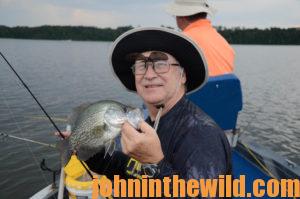 for catching fish by using dull hooks. (See Day 2). However, as Ingram explains, “I’ve learned when a bass hits a jigging spoon in the late spring or summertime, it inhales the lure. Ninety percent of the bass I catch with the jigging spoon will have the spoon either in their throats or deep in their mouths. I rarely lip-hook a bass or a crappie when fishing the jigging spoon in warm or hot weather.”
for catching fish by using dull hooks. (See Day 2). However, as Ingram explains, “I’ve learned when a bass hits a jigging spoon in the late spring or summertime, it inhales the lure. Ninety percent of the bass I catch with the jigging spoon will have the spoon either in their throats or deep in their mouths. I rarely lip-hook a bass or a crappie when fishing the jigging spoon in warm or hot weather.”
Ingram hooks most fish deep in their mouths because of the action he gives the jigging spoon. Most anglers will fish the jigging spoon by lowering the bait to the bottom, making three or four hard twitches toward the surface and then letting the spoon fall back to the bottom. Also, because the spoon is such a heavy bait, most anglers don’t fish it until the fall of the year when they expect bass and crappie to be holding deep. But Ingram lowers the bait down to the cover, gently raises his rod tip up 6 inches and then lowers it again 6 inches. This slow, up-and-down movement is used from 6 feet below  the surface down to the cover that includes submerged bushes and treetops, through the cover and down to the bottom. Once the lure hits the bottom, Ingram uses this slow, up-and-down movement to work the lure back to the surface.
the surface down to the cover that includes submerged bushes and treetops, through the cover and down to the bottom. Once the lure hits the bottom, Ingram uses this slow, up-and-down movement to work the lure back to the surface.
“Keep in mind that during the warmer weather when the temperatures are high, and the fish are deep, crappie most likely will not be aggressive,” Ingram says. “They don’t want to chase lures. However, if you bounce the baits off their noses, they will inhale the lures. Crappie especially won’t come out of cover and pursue baits like they will in the spring. They’ll be holding in thick cover and waiting on minnows and shad they can ambush easily. When a jigging spoon drops into cover where both bass and crappie are holding and starts to rise and fall slowly, either the bass or the crappie or both will inhale the spoon. The action I use resembles taking a teaspoon, slowly putting it all the way down to the bottom of a tall, iced-tea glass and then slowly pulling the spoon all the way out of the glass. Most fishermen won’t believe a straight, slow, up-and-down motion will attract crappie. But actually, this tactic will make crappie bite better during warm-weather months than any other action you can give the lure.”
To learn more about crappie fishing, check out John E. Phillips’ book, “Crappie – How to Catch Them Spring and Summer,” 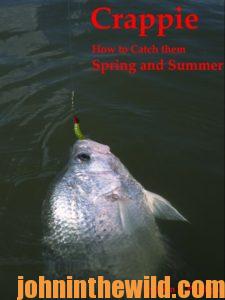 available in Kindle and print versions at http://amzn.to/WGaJLT and Click here for the Audible link.
available in Kindle and print versions at http://amzn.to/WGaJLT and Click here for the Audible link.
Tomorrow: What Other Jigging Spoon Tactics Catch Crappie



